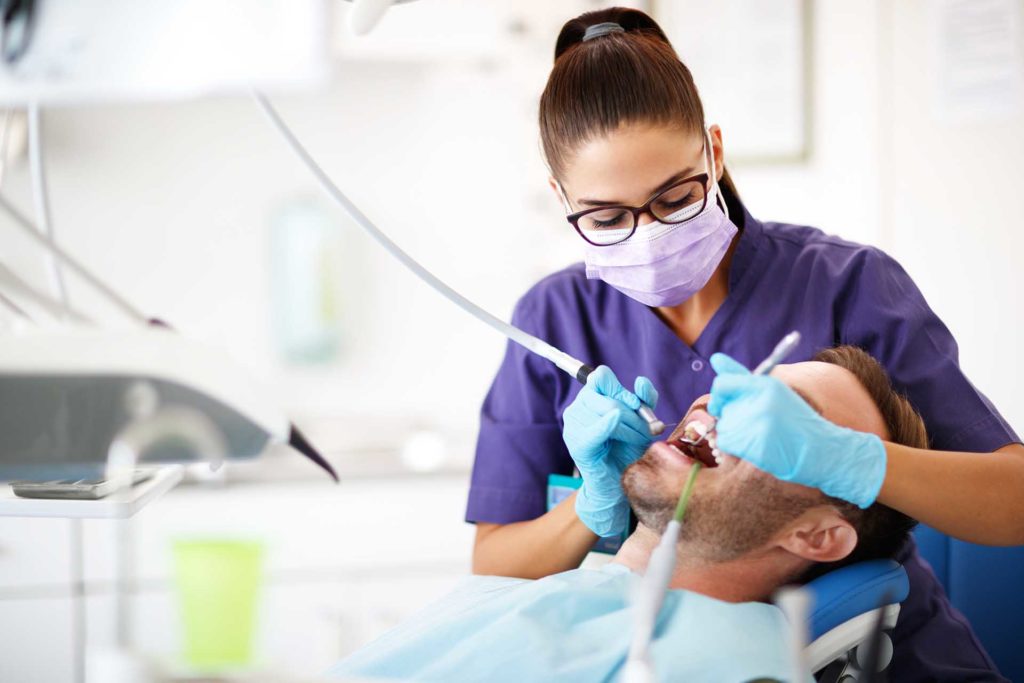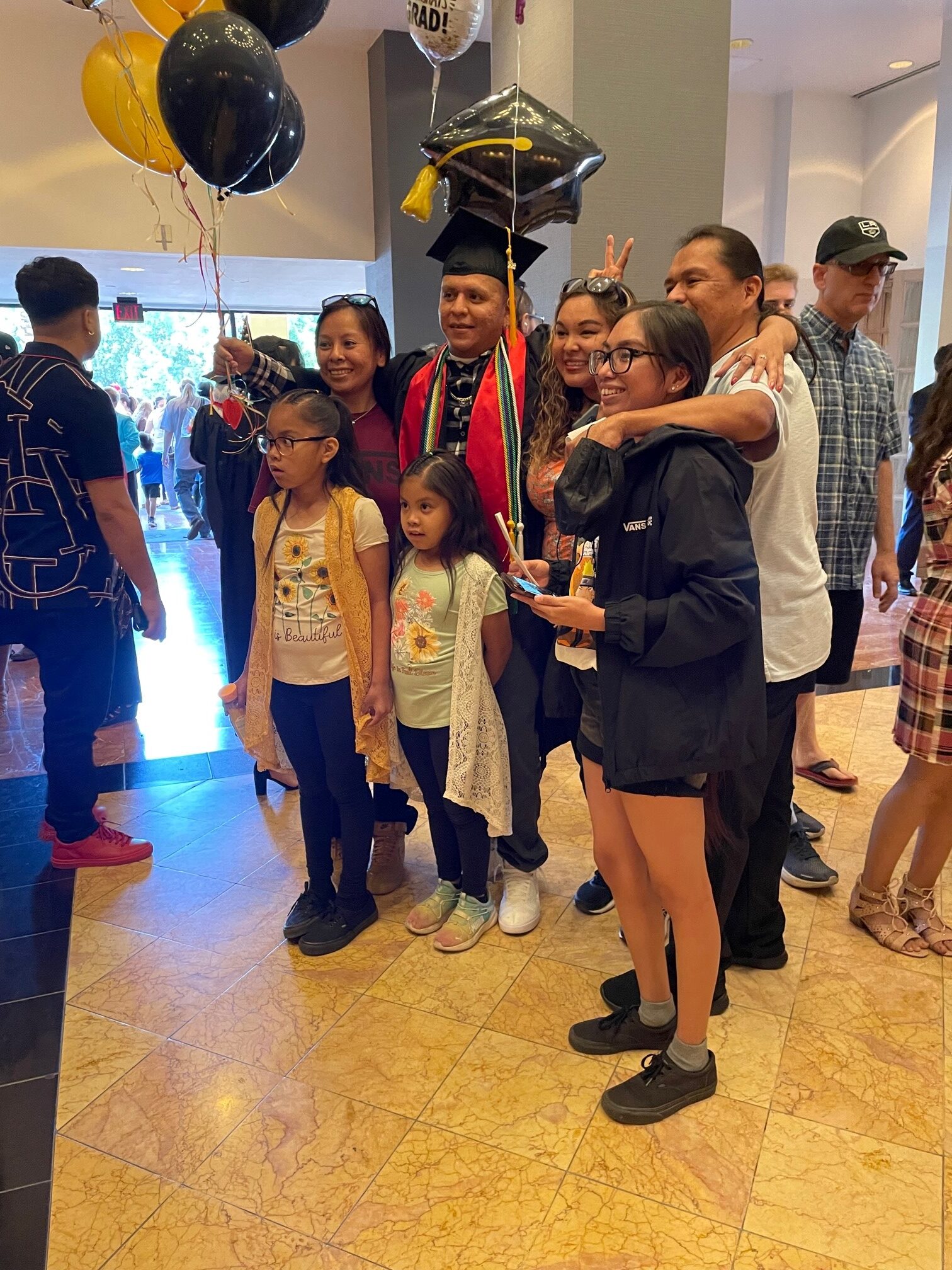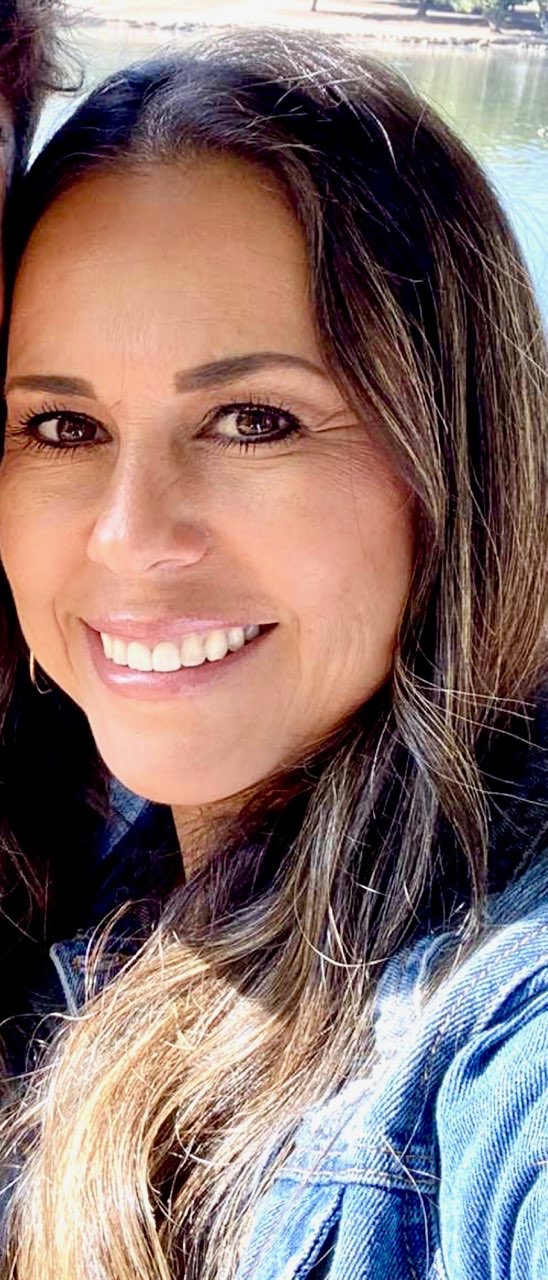
Dental Assistant vs. Registered Dental Assistant (RDA)
If you have an interest in dentistry and are looking for an opportunity to take that first step toward entering the field, UEI College will provide you with a number of reasons why pursuing a career in dental assisting may be an ideal option for you. Consider enrolling in UEI’s Dental Assistant Program, which will provide you with the knowledge, skills, and hands-on training required to become a successful Dental Assistant.
Interested In Our Dental Assistant Program? CLICK HERE >
As UEI Dental Assistant graduates enter the workforce, one thing becomes increasingly clear to many of them: education within the dentistry career never stops. Not only does the field continually change based on new science, innovation, and evolving patient needs, but professional career advancement within such a highly regulated field as dentistry often requires specialized training, licensing, and certifications.
For new Dental Assistants within the State of California, one of the first times they face this reality is when they consider the pros and cons of becoming a Registered Dental Assistant, or RDA.
In this post, we’ll explore the question of what it means to earn a Registered Dental Assistant license and whether becoming an RDA may be the right career move for you. We’ll also briefly address what’s required, both in experience and training, in order to become an RDA. But, before we do that, the focus of this blog post will be to explain the difference between a Dental Assistant vs. a Registered Dental Assistant.
Dental Assistant vs. Registered Dental Assistant
The major difference between Dental Assistants and Registered Dental Assistants lies within the duties that each can perform. Typically, Registered Dental Assistants are permitted to perform a greater number of functions within a dental clinic than unregistered Dental Assistants. For example, RDAs can perform coronal polishing, whereas unregistered Dental Assistants are not. We will cover the types of tasks that each category of Dental Assistant can perform in more detail below.
That said, Dental Assistants are key members of most dentistry teams. Whether their days are spent focusing on patients or administrative duties in the clinic – for many, it’s typically a mix of both – Dental Assistants exist to help improve quality and efficiency within a practice.
In many states, including the state of California, Dental Assistants are not required to be licensed as Registered Dental Assistants. Laws exist, however, that govern conduct within the profession as well as tasks and duties Dental Assistants are allowed to perform. And, as one might expect, Dental Assistants with RDA licenses are able to legally perform a wider range of specific duties than those who are unlicensed, which may make them more marketable to potential employers.
Who oversees such licensing and regulation? In California, these responsibilities fall on the Dental Board of California, which exists under the umbrella of the Department of Consumer Affairs.
According to its homepage, the Dental Board of California licenses and regulates more than 100,000 licensees, including Dental Assistants, Registered Dental Assistants (RDAs), and Registered Dental Assistants in Extended Function (RDAEF). On top of this, the Board “has the responsibility for setting the duties and functions of unlicensed Dental Assistants,” which they do with an eye toward protecting the public.
What Can You Do As a Dental Assistant and as an RDA?
As Registered Dental Assistant (RDA), licensing is a professional designation specific to California (see the section “What is the difference between an RDA and CDA?” below for more info); let’s take a look at the duties and tasks both registered and non-registered Dental Assistants are allowed to perform in the state.
As expected, tasks that can be performed by unlicensed dental assistants are generally more limited and require stricter dentist oversight than those of RDAs. According to California State Code, the duties that may be performed by an unlicensed dental assistant include:
- Taking impressions
- Taking dental X-rays (pending completion of board-approved course and/or exam)
- Applying non-aerosol and non-caustic topical agents
- Removing post-extraction and periodontal dressings
- Placement and removal of elastic orthodontic separators
- Removing sutures
- Applying topical fluoride
- Examining orthodontic appliances
- Extra-oral duties or functions specified by the supervising dentist
Again, each of these tasks must be performed under either general or direct supervision by a supervising dentist. These same goes for the followed additional duties that the California State Code allows only those with an RDA license to perform:
- Performing mouth-mirror inspection of oral cavity, including charting lesions, restorations and missing teeth
- Placement and removal of temporary sedative dressings
- Obtaining endodontic cultures
- Removing excess cement from supragingival surfaces of teeth with a hand instrument or floss
- Size stainless steel crowns, temporary crowns and bands
- Fabrication of temporary crowns
- Placement of orthodontic separators
- Coronal polishing
- Temporary cementation and removal of temporary crowns and bands
The above list of tasks is just a sampling of a longer list of Dental Assistant and RDA “Duties and Settings” outlined by state regulations. However, it shows that those who may seek advancement within their Dental Assistant position or within the dental field as a whole will likely generate a greater wealth of on-the-job experience as with an RDA license.
How Can You Become a Registered Dental Assistant?
Becoming a Registered Dental Assistant (RDA) through the Dental Board of California is a multi-step process, one that involves an application process, proof of education and/or experience, the completion of a series of Board-approved courses, and testing. The entire process is outlined in detail by the Dental Board here.
To summarize, you must check each one of the following boxes in order to become licensed as an RDA:
- Graduate from a California Board-approved RDA educational program, or complete 15 months of work experience as a Dental Assistant – or a combination of each.
- Successfully complete California Board-approved courses in radiation safety and coronal polishing.
- Within 5 years of your RDA application, you must successfully complete a 2-hour Board-approved course on the California Dental Practice Act and an 8-hour Board-approved infection control course.
- Complete and pass an American Heart Association-approved course in Basic Life Support (BLS).
- Apply for licensure as a Registered Dental Assistant with the Dental Board of California.
- Pass the state combined written RDA General Law and Ethics exam.
Assuming the application is complete and all in requirements and related paperwork is in line, the application may be approved in as few as 30 days. You can visit the Dental Board of California’s “Registered Dental Assistant Applicants” page for more information.
What is the Difference between an RDA and CDA?
CDA, or Certified Dental Assistant, is a national certification that’s obtained through the Dental Assisting National Board, Inc., or DANB. To obtain a CDA, applicants must pass three component exams in general chairside assisting, radiation health and safety, and infection control.
In contrast, Dental Assistants must pass state-specific requirements in order to become licensed as a Registered Dental Assistant, or RDA. In other words, the requirements for earning an RDA license will vary state by state, and in some states (such as in California), the process for becoming an RDA is considered more vigorous than earning a CDA designation.
If you’re not sure what’s required in your state, you can find out by opening the interactive map on the DANB website and clicking the state within which you’d like to work. DANB will then outline your state requirements and relevant permits that may affect your ability to perform specific duties as a dental assistant.
What is the Highest Level of Dental Assistant?
This is a difficult question to answer because state code typically outlines duties, functions and licensing requirements for Dental Assistants. This means, of course, that what’s required license- and certification-wise to legally perform all possible dental assistant duties is going to vary state by state.
In California, RDAs may expand their on-the-job repertoire of duties by becoming a Registered Dental Assistant in Extended Functions (RDAEF). Based on California’s Code of Regulations, an RDAEF can perform all the duties of an RDA, plus several others including:
- Taking impressions for cast restorations, space maintainers, orthodontic appliances and occlusal guards
- Preparing enamel by etching for bonding
- Formulating indirect patterns for endodontic post and core castings
- Fitting trial endodontic filling points
- Applying pit and fissure sealants
- Removing excess cement from subgingival tooth surfaces with hand instruments
- Applying etchant for bonding restorative materials
A lot of this, of course, is jargon that those without dentistry training may not understand. However, being able to perform a wider range of tasks under the supervision of a licensed dentists can open new career opportunities for dental assistants with advancement in mind.
The training and requirements for earning an RDAEF is outlined in detail on the Dental Board of California website.
What is the Next Step Up from Dental Assistant?
Dental Assistants who aspire to advance beyond their current positions in the dental field can do so in a number of ways. Besides becoming an expanded function Dental Assistant (as outlined above), Dental Assistants who wish to advance into different areas of the dentistry field may consider the following options:
Dental Hygienist – Clean patient’s teeth, help them maintain optimal dental hygiene, and serve as an important line of defense in identifying potential issues before they get to be a problem. Becoming a dental hygienist requires going back to school to earn a specialized degree.
Dental Office Administrator – If you find your professional strengths lean more heavily toward administrative, operational and management duties, a position as a dental office administrator – perhaps even a clinical manager – may be an optimal next step in your career. Successful office administrators can be trained in-house or achieve advancement through front office and billing programs.
Dental Sales Rep – Dental offices not only need to remain stocked up on equipment, supplies and materials, but they also need to stay on top of the latest and most innovative technologies that may help their clinic … and their patients. After developing experience within the clinical environments, some dental assistants find the supply side of the dentistry field a suitable next step.
Dental Instructor – Give back to the dentistry field by passing along your knowledge, skills and talents to the next generation of Dental Assistants. At UEI College, the instructors within our Dental Assistant program are current and former Dental Assistants, and as demand for the profession grows, so will the need for more people to teach the profession.





